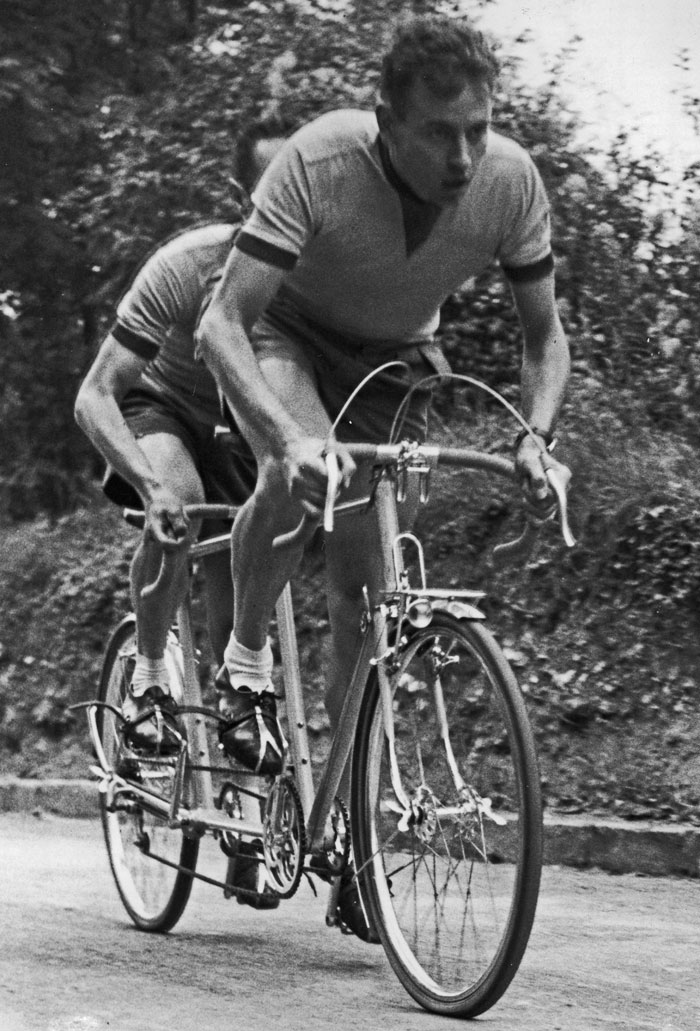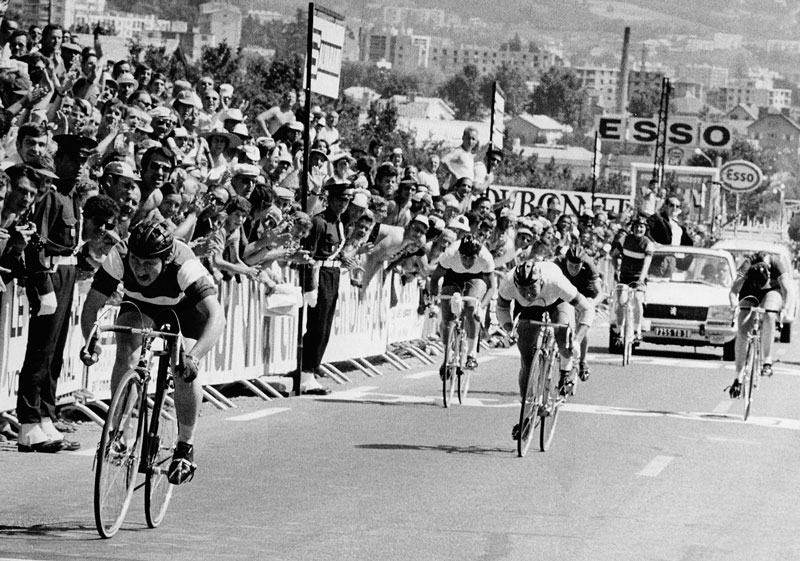René Herse Cranks – Strong Enough?

When we presented the new René Herse cranks last week, a number of people wondered whether they would be strong enough. After all, most cranks have four or five spider arms, whereas the Herse cranks use only three. And what about the small bolt-circle diameter? Does it support the chainrings sufficiently?
Classic components have one major advantage: They have proven themselves. We don’t have to guess whether they are a good design, we can look at their record. Or records – because numerous performance records have been set with René Herse cranks.
The photo above is from the Summer 2011 Bicycle Quarterly. It shows Lucien Détée and Gilbert Bulté on their way to a record in the Journée Vélocio hillclimb. That climb was about 3 km (2 miles) long, up a steep hill near Paris that maxed out at 15%.
Their Herse tandem is equipped with Herse cranks. Think of the forces on that large 54-tooth chainring as this powerful team sprints out of the saddle, up this steep hill, in an all-out effort.
Détée and Bulté were among the strongest randonneurs of their era. They just had been the fastest riders in the 1956 Paris-Brest-Paris. They also set a record in the 100 km (64 mile) time trial, averaging over 43 km/h (27 mph). All these rides, and many more, were on René Herse cranks. I asked them whether they ever had problems with their cranks or chainrings, and the answer was: “No.” If Herse cranks were stiff enough for the combined forces of these two riders, they will be fine even for the most powerful racers.

Speaking of powerful racers, here is Geneviève Gambillon on the way to winning the 1972 world championships, on a René Herse bike with Herse cranks. She was known for her powerful sprint, and she used it to devastating effect at the world championships. She repeated her performance two years later, winning the 1974 world championships in Montreal. (The photo is taken from our book The Competition Bicycle.)
René Herse cranks has proven themselves over decades and millions of kilometers of hard riding. We are confident that the new production will be at least as reliable.
So why do other makers use more arms on their spiders and larger bolt circles? That is a topic for a separate post: stay tuned.


